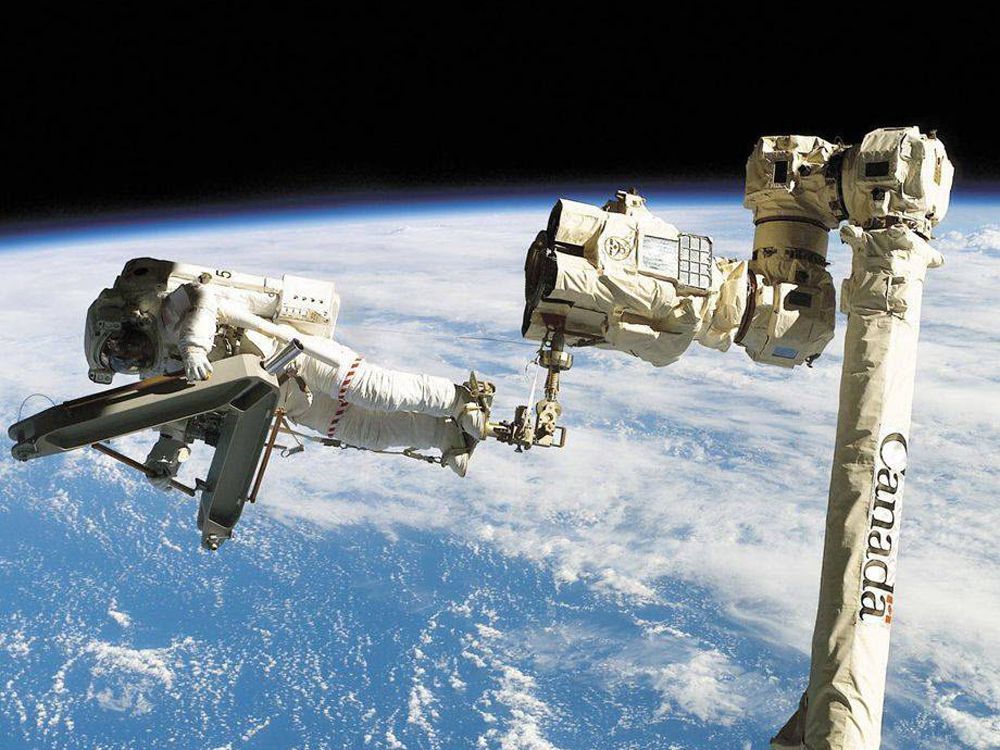‘Things are clicking into place.’ Space firm MDA says flurry of big announcements indicate what’s to come

Chief executive insists the company is poised for long-term success, as it’s now gathering momentum

Article content
MDA Ltd., the company behind the Canadarm, is having a big week.
Advertisement 2
Story continues below
Article content
The company said on March 8 that it had received the federal government’s permission to use its satellites to help Ukraine repel Russia’s invasion; two days later it announced that it had won a $269-million contract from the Canadian Space Agency (CSA) to continue work on the latest iteration of its famous robotic arm, and that it will build a new global headquarters in Brampton, Ont. will include a factory to build Canadarm3, a mission control centre, equipment-testing facilities, and a public space to show off its cutting-edge technology.
“Each of these elements is continued demonstration that things are clicking into place as we move forward into the future,” Mike Greenley, chief executive, said in an interview.
Advertisement 3
Story continues below
Article content
The company would benefit from a refreshed narrative, as it’s had a tough start to the year.
Greenley, who’s been at the company for four years, helped lead MDA through an initial public offering in April 2021, and issued stock at a price of $14 per share. It looked like good timing, as investors couldn’t get enough of technology companies. But even though MDA appears to be uniquely poised to take advantage of a renewed interest in space exploration, the company has been unable to withstand the 2022 tech wreck that has brought last year’s high-flyers back to Earth.

MDA shares are down about 35 per cent since April, closing at $9.48 on March 10. Still, that was six per cent higher than the previous close. And the company is profitable, which is more than some technology companies can boast. MDA reported revenue of $111 million and a profit of $4 million in the quarter ended Sept. 30 2021, the most recent, compared with revenue of $98.4 million and a loss of $1.9 million in the year-earlier period.
Advertisement 4
Story continues below
Article content
Greenley insisted the company he runs is poised for long-term success, as it’s now gathering momentum.
In February, MDA closed a deal with Louisiana-based Globalstar Inc., a GPS company, to provide 17 new satellites at a price of US$11.4 million per unit.
The CSA contract solidifies MDA’s spot in the NASA’s plans to return to the moon. MDA said it will take 17 months to complete the preliminary design of Canadarm3’s robotics system — work that will take place its new, “state of the art” headquarters that the company said will cost more than $100 million to build.
Perhaps the most surprising announcement, however, was that MDA had indirectly joined Ukraine’s fight against Russia, pledging to use its satellite technology to supply authorities with high-quality images of what’s happening on the ground.
Advertisement 5
Story continues below
Article content
MDA is in a strong position as a global space company in a growing space market
Mike Greenley
“MDA is in a strong position as a global space company in a growing space market,” Greenley said. “We’re a long-term investment.”
The company will use its “synthetic aperture radar” (SAR) technology to capture images over restricted areas in Ukraine. SAR satellites can collect images through all weather and cloud conditions compared to camera satellites, making it useful for tracking troops, vehicles and large weaponry.
The federal government granted MDA special authorization to collect imagery to merge and analyze it with other commercially produced satellite images to provide “near real-time” intelligence reports for Ukrainian government officials, the company said.
Greenley said MDA isn’t being paid by the Canadian government to survey the battlefield in Ukraine. He said MDA will sell the radar images to companies and the Ukrainian government, although he declined to give the price.
Advertisement 6
Story continues below
Article content
On March 3, Defence Minister Anita Anand announced that Canada would contribute $1 million towards purchasing high-resolution, satellite images from private enterprises.
-

Canadian space company MDA wins a $269-million contract to continue work on Canadarm3
-

A remote village, a world-changing invention and the epic legal fight that followed
-

Saudi prince’s US$500 billion ‘Neom’ megaproject woos Wall Street
Christian Leuprecht, a political studies professor at Queen’s University and the Royal Military College, both in Kingston, Ont., said the government’s approval to sell geo-intelligence to Ukraine could help the country bolster its attack against Russia.
“It would be unusual for (Canada) to provide raw intelligence to a partner country that is not a close ally,” Leuprecht said. Ukraine isn’t part of NATO, the very institution Russia is trying to prevent its neighbour from joining, and it’s not part of the Five Eyes, an intelligence-sharing pact between Canada, the United States, the United Kingdom, Australia and New Zealand.
Advertisement 7
Story continues below
Article content
“The benefit of using commercial satellite imagery is that the Ukrainians can use it directly,” Leuprecht said. “It doesn’t have to be mediated by us or vetted by us.”
Taking part in a war wasn’t part of Greenley’s plans until a couple of weeks ago. The company’s primary mission remains space travel, and eventually habitation.
“There’s significant growth and investment in corporations around the world interested in doing business in space,” Greenley said. Canadarm3, “allows us to take our very proven space robotics technology to the next level and importantly sets the foundation for commercialization,” he said.
• Email: [email protected] | Twitter: biancabharti
Advertisement
Story continues below








